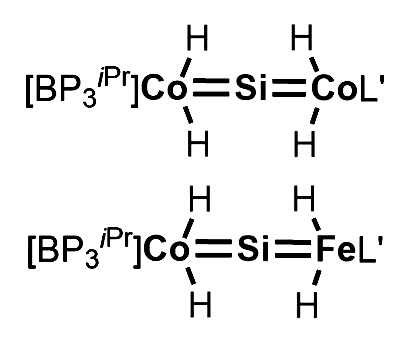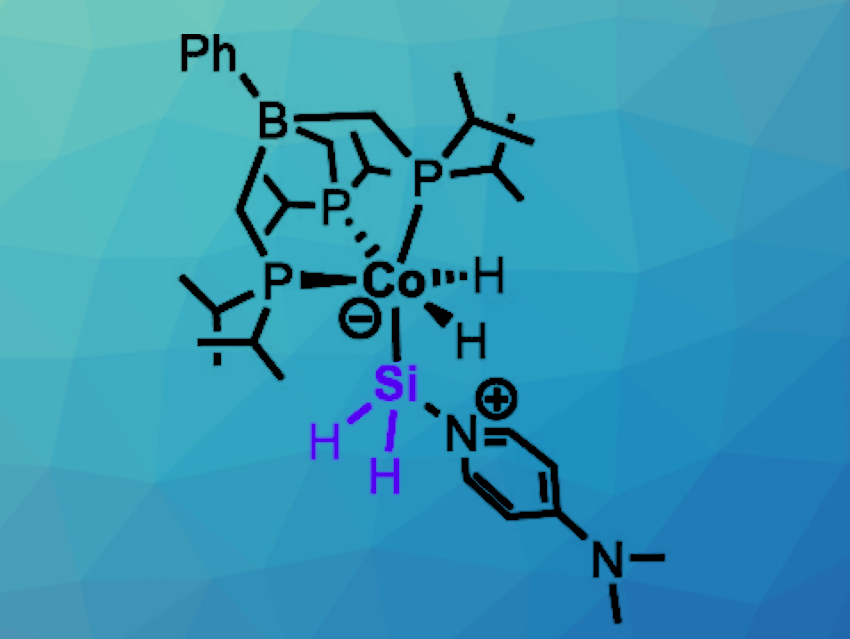Materials based on transition metals and silicon, such as copper silicides, for example, have important uses in industry. To understand the reactivity of solid-state silicides, molecular model compounds could be useful. However, molecular silicide complexes can be challenging to synthesize and are, thus, uncommon. There are some examples of bimetallic silicides of the type LM═Si═ML (L = ligand, M = metal), but there is a lack of general, controlled synthetic methods for this compound type.
T. Don Tilley, University of California, Berkeley, USA, and colleagues have found that the adduct [BP3iPr](H)2CoSiH2(DMAP) (pictured above, [BP3iPr] = PhB(CH2PiPr2)3–, DMAP = 4-dimethylaminopyridine) can be used as a synthon for a terminal silylene complex (LM═SiH2) in the modular assembly of complex silicide structures. The adduct was prepared via a reaction of [BP3iPr]Co(DMAP) with SiH4 in toluene.
The prepared adduct can then serve as an SiH2 synthon in reactions with a second metal complex to give bimetallic silicide complexes of the type [BP3iPr](H)2Co═Si═M'(H)2L (M’ = Co, Fe; simplified structures pictured below). For example, a reaction with ([BP2tBuPz]Co)2(μ-N2) ([BP2tBuPz] = PhB(CH2PtBu2)2(pyrazolyl)−) gave the the unsymmetrical silicide [BP3iPr](H)2Co═Si═Co(H)2[BP2tBuPz]. The team performed an analogous transformation to prepare [BP3iPr](H)2Co═Si═Co(H)2Tp” (Tp” = HB(3,5-diisopropylpyrazolyl)3–). The symmetrical silicide [BP3iPr](H)2Co═Si═Co(H)2[BP3iPr] was prepared by treatment of a mixture of the prepared adduct and [BP3iPr]Co(DMAP) with Ph3B. In this reaction, the released DMAP formed Ph3B–DMAP as a product.

The researchers also prepared a heterobimetallic silicide containing cobalt and iron, i.e., [BP3iPr](H)2Co═Si═Fe(H)2[SiP3iPr] ([SiP3iPr] = PhSi(CH2PiPr2)3). This silicide was obtained by the reduction of [SiP3iPr]FeCl using KC8, followed by the addition of the prepared adduct and Ph3B. Overall, the synthesized silylene complex provides access to a series of symmetrical, unsymmetrical, and heterobimetallic silicides.
- A [CoSiH2] Silylene Synthon Provides Modular Access to Homo- and Heterobimetallic [Co═Si═M] (M = Co, Fe) Silicide Complexes,
Rex C. Handford, T. Don Tilley,
J. Am. Chem. Soc. 2023.
https://doi.org/10.1021/jacs.3c07998




